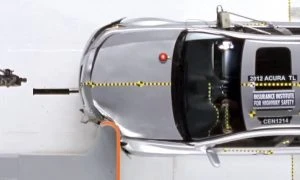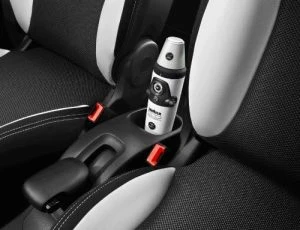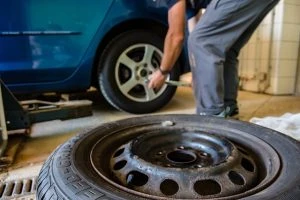Safety
ANCAP Updates

There have been recent changes to the tests at the Australasian New Car Assessment Program (ANCAP). The new vehicles making their way to our showroom floors are more complicated and go beyond merely being a tool for getting you from one point on the map to another. There are many technologies that we are familiar with now that weren’t available on many cars even a couple of decades ago. Most of us will know what a seatbelt is, and what ABS and ESC do, and that our cars have airbags. Seatbelts have been common in cars since the seventies, while the other two features have been common since the early 2000s. Even as far back as the nineties, you’d slip yourself into a Saab 9000, any BMW, or Honda Legend and there would be a logo on a dash panel or steering wheel saying that behind this was an airbag at the ready. Anti-lock braking technology, commonly known anti-brake skid (ABS), continued to become more sophisticated and reliable throughout the 1980s. By the early 1990s, ABS was a standard feature in many new vehicles and was considered pretty cool and a lifesaver in the wet. Electronic stability control (ESC) was also a pretty big game-changer in terms of the way a vehicle could be kept in line and pointing in the right direction when any hint of wheel skid was detected. ESC and ABS were linked into the same system.
Today, ESC and ABS have all sorts of extra electronic wizardry around them that can tell these features to engage into action quickly. You think of all the camera technology, and laser and sonar technology that can detect how far the back end of a bus is away from the nose of your vehicle, which just happens to be catapulting towards the bus far too fast. These onboard systems have been designed to detect the situation and engage the braking systems (ABS and ESC) in a timely fashion in order to stop an accident from occurring. This wizardry is now looking out for other road users’ safety as well as your own as you guide the vehicle from the driver’s seat. New vehicles can now keep themselves inside their own lane, should you happen to become distracted. The systems will even detect an incoming pedestrian that has decided it’s a great idea to drink far too much alcohol at the pub and then stagger home across a busy street without using the traffic light crossing at night. (On a more serious note, this sort of drunken decision can be fatal – when I was in high school, a friend of mine hit a drunk in black clothes who ran in front of her car on a wet night when she was on her P-plates. Witnesses were there to tell the cops that there was no way she could have seen him coming or braked in time, so she didn’t face consequences for manslaughter, but she was traumatized, as you can imagine.)
New levels of safety technology are being incorporated into the newest vehicles we can buy. This has meant that our mates at ANCAP have had to bring in new tests and rating criteria for these vehicles. The latest criteria were updated last year (2023). A maximum of five stars can be given out to a vehicle that has undergone crash testing and other safety tests. Vehicles are required to meet minimum score thresholds for each star rating level, and these rating requirements and testing criteria are updated every 3 years to keep up with all of the new models that seem to be pouring in from all parts of the globe.
A side effect of these updates means that older cars that had a five-star rating when they first entered the market wouldn’t get the same rating now. This is something to be aware of if you are considering buying a second-hand car or an older model.
The 2024 Mitsubishi’s Triton Dual Cab ute was the first Dual Cab ute tested under the latest ANCAP rating criteria. The sixth-generation Triton earned itself a five-star safety rating. Regularly tweaking the changes to the safety rating criteria at ANCAP is important because it keeps pace with all the new safety features and technologies that make their way into new vehicles entering the Australian and New Zealand automotive markets.

Silly Features That Never Made It

In most modern cars, you can find a selection of neat features to make the task of driving easier and more pleasant. Some of the ones I particularly like include active cruise control, ambient lighting, steering wheel mounted audio controls, reversing cameras and Bluetooth connectivity so my phone and car talk to each other. I guess most of us have our favourite driver aids.
However, over the over 100 years that the car has been around, manufacturers and designers have come up with some features that flopped, mostly because they were plain silly ideas. We’re not talking about things that have been phased out because they are no longer in high demand, such as cigarette lighters (which have morphed into 12-volt power outlets), or because they were a bit iffy in terms of safety (such as bench seats). Instead, we’re talking about ideas that were totally nuts. Here’s the looniest ones that were put forward by designers with a straight face.
In-Car Toilets
In the late 1940s, an inventor named Louie Mattar customized his Cadillac so that he could go on a long-haul trip of around 6000 miles without stopping, even to refuel. While most of us would be more interested on how you manage to get something that goes for that long without refuelling, which wouldn’t be silly, quite a few designers in the 1950s considered installing one of the other things that Mattar put in his customized car: a toilet. Yes, a toilet that the driver or passenger can use without leaving the car. However, this proved to be impractical, considering how easy it is to simply pull over at a public loo, or café or garage – or, in remote and rural areas, a handy bush.
Flamethrowers

Yes, seriously. In the late 1990s, when violent crime was a real problem in Johannesburg, South Africa, one inventor decided that the best way to protect drivers from carjackings was to install aftermarket flamethrowers that could be activated in self-defence. This was designed to use gas to create a fireball that didn’t damage the paint. The laws at the time allowed South Africans to use deadly force in self-defence, and the fireballs sent out by the “BMW Blaster” weren’t lethal; they “merely” blinded the would-be carjackers. The downsides were that (A) a matching fireball was released from the opposite side of the vehicle, potentially injuring innocent bystanders and (B) flamethrowers have been outlawed by the United Nations. The invention won the Ig-Nobel Peace prize for 1999 and the rumour is that 25 BMWs received this “upgrade”.
http://news.bbc.co.uk/2/hi/africa/232777.stm
Children’s Partition
Another one from the 1950s, back when rear seatbelts (and possibly seatbelts full stop) weren’t really a thing, and kids who monkeyed around in the back seat while the car was moving were threatened with “Don’t make me stop this car!” Some designers thought that perhaps it would be less distracting (and pleasant) for the driver to ensure that the children were neither seen nor heard, courtesy of a privacy partition of the sort found in very posh limousines. However, most parents preferred to know if their kids were screaming, fighting or giving each other black eyes in the rear seat, so this idea didn’t catch on.
Automatic Seatbelts
This one’s from the 1970s to the 1990s when more automatic features were becoming popular. One that didn’t catch on was the automatic seatbelt. An automatic seatbelt worked by taking the shoulder strap from the back of the seat and fastening itself onto the B-pillar when the engine started or the door closed. The user had to buckle up a lap belt him/herself. This idea was very exciting, and in 1977, a law was passed in the US that stated that by 1983 all new cars should either have automatic seatbelts or airbags. The first commercial vehicle to have these automatic seatbelts was the 1975 Volkswagen Golf, and many other manufacturers had offerings with this safety feature, including Hyundai and Toyota. However, the downside was that a seatbelt that isn’t permanently fixed to the B-pillar isn’t as secure as one that is, and users still had to clip in the lap belt separately. They also didn’t play nicely with child seats and were a pain for getting in and out if you were carrying anything. As someone with long hair that occasionally gets pulled into the slot of ordinary retractable inertia seatbelts, I imagine that these automatic seatbelts would have been a right pig for people with long hair. So airbags were the safety feature that won out.
If anybody has experience of a vehicle with an automatic seatbelt, let us know in the comments what you thought of them!
Joystick Steering Systems
Although the original horseless carriages of the late 19th century sometimes used a rudder system rather than a wheel, the steering wheel has become the one we’re all familiar with. However, during the 1990s, Saab decided to fit its some of its 9000 models with a joystick steering system. Fortunately, not all Saab 9000s had them and plenty had the ordinary wheel. The joystick was too easily knocked and wasn’t precise enough. This was particularly an issue, given that the Saab 9000 was pretty responsive when you put your foot on the accelerator (I used to own one, and I rather miss the way that it could dart into the gaps at the intersections like a hummingbird spotting a tasty new flower…).
Coffee Machines

Although coffee doesn’t originate in Italy, all the words we use at the local coffee shop are Italian (latte is the Italian world for “milk”, for example). So it’s not surprising that Fiat, in 2012, attempted to include a real working compact espresso machine that sat in the centre console in its 500L models released in Europe. It was, however, short-lived, probably because it took up the driver’s armrest, and comfort won out over the convenience of coffee on the go, and possibly because hot liquids and sharp corners are not a happy combination. However, there is still part of me that thinks that this idea isn’t so silly and wouldn’t mind one.
How To Change A Flat Tyre

Sometimes, it pays to go back to basics. After all, everybody has to learn the basics some time! There is a common breakdown that you should be able to manage yourself: a puncture in the tyre. With a little bit of prior knowledge, this scenario (which is more common than you might think) can be tackled confidently. If you have the original manual that came with your car when it was first bought from a dealer, then this booklet will have a set of instructions to follow so that you can familiarise yourself with the process of putting a spare tyre on. However, here is the general procedure for changing a wheel.
First of all, let’s figure out how to jack up the vehicle safely. Knowing how to properly jack up the car safely is useful for changing a flat tyre and also for doing simple inspections to wheel bearings and brakes. Jacks are used to get a vehicle off the ground. Now, a word of warning here would be that if you are going to get underneath the car and have a look while the car has been jacked up off the ground, then you must place jack stands in place to hold the weight of the vehicle. This is because if the jack fails or the car is knocked off balance, then the stands will hold the vehicle up, and you won’t get squished. I get claustrophobic enough going under a car even with the jack stands in place so the thought of doing it without is – bleught!
When you jack up the vehicle so that you can work or inspect underneath it, ensure that the vehicle’s handbrake is on, that the vehicle is in first gear (manual transmission) or in park (automatic transmission), that the wheels are chocked, and the jack stands are in place. For changing a tyre, providing the vehicle is on level ground, the handbrake is on, and the car is placed in gear, the jack will take the weight for the duration of changing the wheel. Just don’t go clambering underneath the car!
Here is the method to follow:
- Secure the vehicle so that it won’t roll (check this rather than assuming – slopes can catch you out in odd places).
- Jack up the vehicle. For changing a wheel that has a punctured tyre, I suggest you jack up the vehicle after loosening the lug nuts a little bit with the wrench provided in the vehicle puncture repair kit. Before loosening the nuts, you will need to remove the wheel cover or hubcap. You can do this by using a screwdriver or the flat end of the wheel lug’s nut wrench to lever the cover or hubcap. The reason for loosening the nuts now is because if it is the front wheel that needs replacing, it will spin freely once it loses contact with the ground as you apply torque to undo the lug nuts. You loosen the lug nuts by turning them counterclockwise (the old lefty loosey–righty tighty rule). The lug nuts will and should be fairly tight and will require plenty of torque to remove. After just loosening the nuts, jack up the vehicle completely.
- Now remove the lug nuts completely. Remove the wheel with the punctured tyre.
- Put on the spare, repaired, or new tyre/wheel. Torque up the lug nuts by hand till they are snug to the rim, then lower the car down till the tyre on the wheel makes solid contact with the ground. Now you can tighten the lug nuts all the way without the wheel spinning. Lower the car down completely.
- Put the jack and tools away.
- Drive away.
Yes, it’s that simple. If your car comes with a space saver spare tyre, your drive should be to the nearest tyre centre to get a new full-size one to replace the punctured one. Otherwise, you’re good to go. But make sure that you get a replacement for the punctured tyre. After all, the worst thing when you need to change a punctured tyre is to find an old flat tyre in the compartment instead of a nice new one.
Are Electric Vehicles At Risk of Being Hacked?
As electric vehicles uptake increases across the world, and technology breaks new ground, concerns about cybersecurity have emerged. EVs, by their nature, are highly reliant on software and connectivity, making them potential targets for hacking.
The question of whether electric vehicles are at risk of hacking is not just theoretical because it has practical implications for the safety of drivers, the security of personal data, and the integrity of transportation infrastructure.
Are Electric Vehicles Exposed to Cyber Threats?
Electric vehicles are essentially computers on wheels. They are equipped with complex software systems that control everything from the engine and brakes, to navigation and entertainment. Many EVs are also connected to the internet, allowing for features such as over-the-air updates, remote diagnostics, and even autonomous driving capabilities.
This connectivity, while offering significant convenience and functionality, also opens up new avenues for cyberattacks. Hackers can potentially exploit vulnerabilities in the software to take control of the vehicle, access sensitive data, or cause disruptions to a vehicle’s operation.
Assessing the Risks
One of the primary risks associated with EV hacking is the potential for remote control of the vehicle. Hackers could theoretically take over critical functions such as steering, braking, or acceleration, putting the driver and passengers at serious risk.
In extreme cases, a hacker could disable a car entirely, leaving it stranded, or worse, use the vehicle to cause harm. Such scenarios, though currently rare, have been demonstrated in controlled environments by cybersecurity researchers, which goes some way towards highlighting the risks posed by EV systems that lack adequate security.

In addition to physical risks, there are also data security concerns. Electric vehicles collect vast amounts of data about their users, including location history, driving habits, and personal information linked to the vehicle’s infotainment system. If this data were to be accessed by malicious agents, it could lead to identity theft, privacy breaches, or targeted attacks.
The growing network of EV charging stations presents another potential vulnerability. These stations, especially those that are publicly accessible, can be targeted by hackers to disrupt the charging process, steal data, or even use the charging network as a gateway to attack the vehicles themselves. The interconnected nature of these networks means that a breach in one area could have cascading effects, potentially affecting large numbers of vehicles or users.
Should EV Buyers Worry?
Although such risks are concerning, it is important to note that the risk of hacking is not unique to electric vehicles. In fact, this issue applies to all new-age, connected cars. Traditional vehicles are also increasingly reliant on software and connectivity, making them vulnerable to similar threats.
To mitigate risks associated with hacking, EV manufacturers are investing heavily in cybersecurity measures. These include encryption, multi-factor authentication, regular software updates, and the use of advanced intrusion detection systems. Governments and industry bodies are also working to establish standards and regulations to ensure that EVs are built with robust cybersecurity protections from the ground up.
At the end of the day, EVs may be at risk of hacking given their reliance on software and connectivity, but the industry is aware of these challenges and is actively working to address them. For now, this risk should not deter prospective buyers from considering what is otherwise, the direction the auto industry is heading.